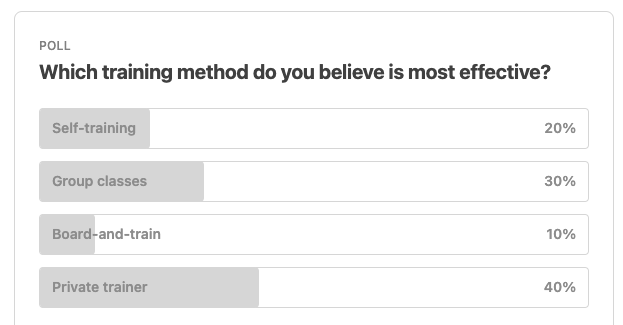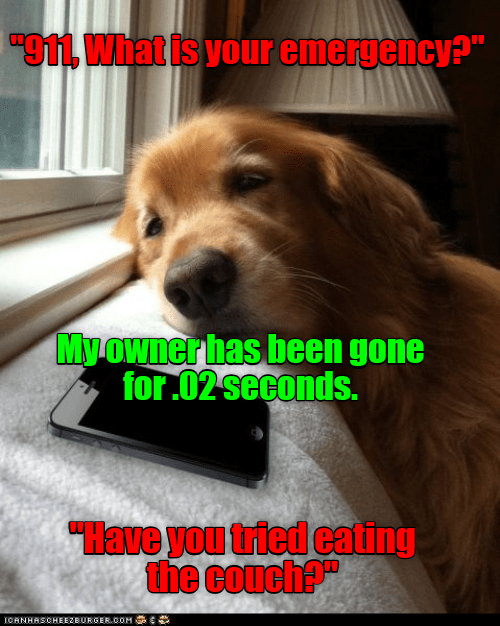Is your dog’s separation anxiety giving you anxiety?
Care Center Vets estimates that 20-40% of dogs seeing behavioral specialists suffer from separation anxiety.
Don’t forget to follow us on Twitter for more dog focused content! 👇👇👇👇
With so many dog owners working from home, canine separation anxiety has become a prevalent problem. Your pup is used to having you around.
What is your dog’s separation anxiety symptom?
Do the neighbors complain because Fido barks whenever you leave the house?
Are you scared to come home because Spot has probably left a mess of stuffing and trash (and maybe worse) in his wake?
Are your door frames and window frames scratched to smithereens?
Some dogs are so desperate to rejoin you that they end up hurting themselves.
Whatever your reasons, we know you’re desperate to resolve your dog’s separation anxiety. You can mitigate this problem by making a few changes to their routine–and yours.
Last week’s poll results
We asked, and you answered! Most readers believe private trainers are most effective when dog training.
Sit & Stay Pro Tip: Separation Anxiety
There are several reasons your dog might show signs of separation anxiety, but most of them come down to one common denominator: a change in routine.
Whether your dog is a new addition to your home, your work or school schedule has changed, you’re in a new home, or someone has left the family, these factors all lead to a change in routine for your dog. The following techniques can help them adjust to the new routine without so much drama.
Stick to a routine. If your dog knows what to expect daily, they’ll feel more secure. Feed and walk them at the same time each day, leave at the same time each day, and return at the same time each day. It helps them trust that you will return.
Exercise. Playing with or walking your dog gives them a huge dose of attention and reassurance, and it can also help burn off some of that nervous energy they use to tear up your sofa.
Crate train. Crating can be a controversial solution, but it works. The key is to think of a crate as a den, not a cage. If you introduce the crate a little bit at a time with positive reinforcement, they’ll view it as a safe place to stay while you’re away.
Distract them. Get ready to go, throw them a toy or treat, and run! A special puzzle ball or bone can make it easier for them to let you go—and maybe even make saying goodbye a positive experience.
Practice makes perfect. Try leaving your dog alone in the next room or their crate for a few minutes. Gradually extend the timeframe and reward calm behavior with treats. Again, this works to reassure them that you will return.
Fake them out. The AKC suggests desensitizing your dog to your leaving habits. If your dog gets upset when you put on your shoes or grab your keys, start doing these things randomly. Put on your shoes and watch TV. Grab your keys and make lunch.
If your dog has an especially severe case of separation anxiety, you may need to consult a professional trainer or discuss calming supplements with your veterinarian.
The Smile Section
Vet Recommendations
Care Center Vets has a great article on the causes, symptoms, and solutions for separation anxiety. They also make a point to mention that you should not retroactively punish your dog for anything they do while you are away:
“It’s important to understand that your pet is suffering from a severe anxiety disorder, and cannot control her actions.”
Read the full article here.
Product of the Week
Paw.com offers calming supplements for your pup.
Choose from bacon, salmon, chicken, or safflower flavored CBD drops, starting at just $35. If you’re looking for an all-natural, vet-approved solution for your dog’s anxiety, give the Prospect Farms CBD wellness products a try.
Want your dog to be featured?
We’d love to!
Think your dog can make us smile? Submit a pic to newsletter@sitandstay.io for a chance to see your pet in our Smile Section!




